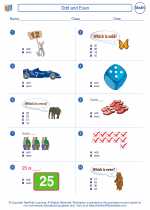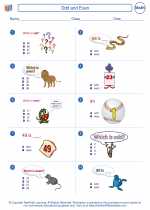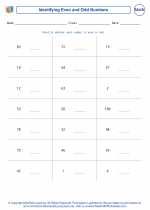Odd and Even Numbers
In mathematics, numbers can be categorized as either odd or even. Understanding the difference between odd and even numbers is an important concept in early math education.
Even Numbers
An even number is a number that is divisible by 2, i.e., when you divide the number by 2, there is no remainder. Even numbers always end in 0, 2, 4, 6, or 8. The first few even numbers are 2, 4, 6, 8, 10, and so on.
Odd Numbers
An odd number is a number that is not divisible by 2, i.e., when you divide the number by 2, there is a remainder of 1. Odd numbers always end in 1, 3, 5, 7, or 9. The first few odd numbers are 1, 3, 5, 7, 9, and so on.
Identifying Odd and Even Numbers
To identify whether a number is odd or even, you can simply look at the last digit of the number. If it is even, the entire number is even. If it is odd, the entire number is odd.
Examples:
- 4 is an even number because the last digit is 4.
- 7 is an odd number because the last digit is 7.
- 12 is an even number because the last digit is 2.
- 15 is an odd number because the last digit is 5.
Understanding odd and even numbers is important for various mathematical operations and patterns. It also forms the foundation for learning about divisibility and other number properties.
.◂Math Worksheets and Study Guides First Grade. Odd and Even

 Worksheet/Answer key
Worksheet/Answer key
 Worksheet/Answer key
Worksheet/Answer key
 Worksheet/Answer key
Worksheet/Answer key
 Worksheet/Answer key
Worksheet/Answer key
